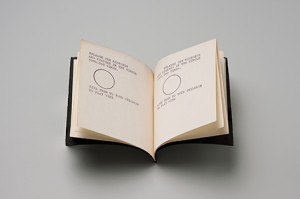
In Collection: Stanley Brouwn (1935, Suriname). MoMA has several of his works in collection, but there are no pictures on the site of the museum, because Brouwn does not want that..
Brouwn Toys, 4000 AD, 1964.
About:
Stanley Brouwn, one of the most important representatives of the Fluxus movement and Conceptual Art, is, in the truest sense of the word, one of the most forceful and inaccessible artist personalities. He does not want his art written about, neither does he want any photographs taken of himself. What is known about him is that he was born in 1935 in Surinam, has lived in Amsterdam since 1957, and for many years taught as a professor at the Kunstakademie Hamburg.
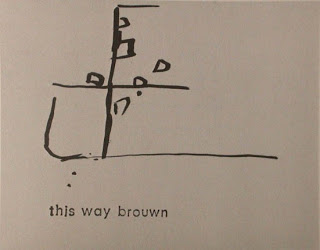 This Way Brouwn, 1962.
This Way Brouwn, 1962.
Since 1960, his work has been shown at nearly all of the important exhibitions, e.g., documenta 5 in 1972, documenta 6 in 1977, documenta 7 in 1982, and most recently at documenta 11 in 2002, at the MACBA in Barcelona in 2005, and at the Centre Pompidou in Paris in 2006. Since the seventies, an integral part of Stanley Brouwn’s artistic work has been the publication of books. His conceptual works deal with distances, measurements, or spaces between two points, persons, and places, but also, in line with his most well known artist’s book This Way Brouwn, with paths. For his layout sketches, he asked passers-by he accidentally met on the street to make a sketch of from memory of certain distances they had covered. Indeed, for Stanley Brouwn, motion, dealing with distances in space and time are the primary material for his artistic activity. He examines this fundamental human activity in ever new contexts and measures distances according to his own units of measure, such as the Brouwn cubit, the Brouwn foot, or the Brouwn step. In 1976 he published his artist’s book 1m 1step, which consists of two lines—one the length of a (his) step, the other one meter long. Thus his own, subjective unit of measurement (the sb foot, the sb cubit, the sb step) is in opposition to a generally acknowledged, universal metric system or an—outdated—local unit of measurement.
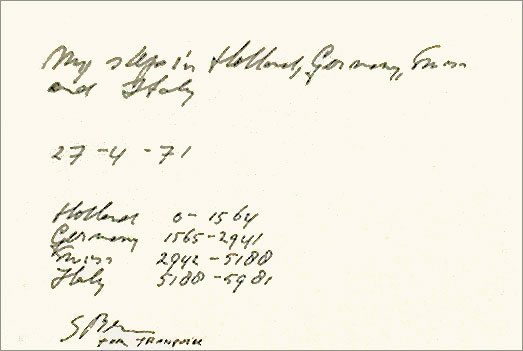
My Steps in Holland, 1971.
Using various units of measurement, he creates portraits of people, buildings, spaces, walls, floors, etc., such as, for example, in his artist’s book Door from 1989, in which the door of the building Reguliersgracht 27 in Amsterdam is measured and depicted. Stanley Brouwn’s works are situated in the field of tension between the abstract and the generally valid and could be summed up under the postulate: people walking on the planet Earth.
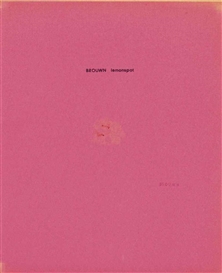 Lemon Spot, 1963.
Lemon Spot, 1963.
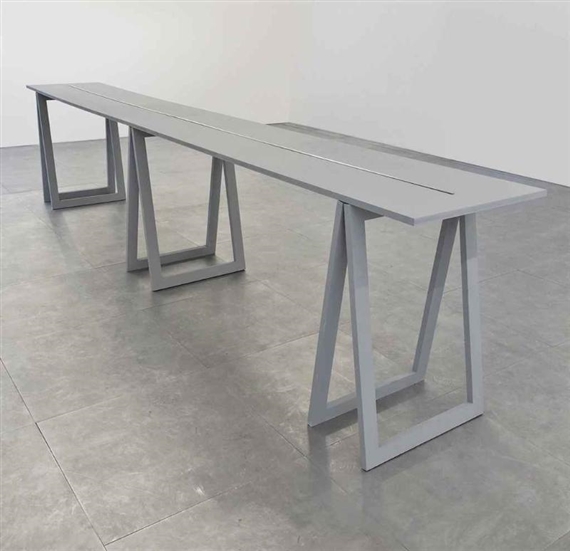 Height 1 + m , 1994.
Height 1 + m , 1994.

